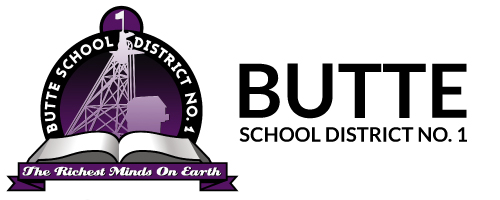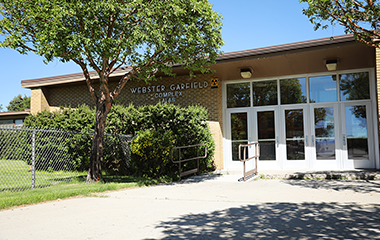Butte School District
THE BOARD OF TRUSTEES
3610
Programs for At-Risk/Disadvantaged Students
The District will designate one (1) at-risk coordinator to collect and disseminate data regarding dropouts in the District and to coordinate the District’s program for students who are at high risk of dropping out of school.
Each school year, the at-risk coordinator will prepare a dropout reduction plan that identifies:
- the number of District students who dropped out in the preceding regular school term;
- the number of students in grades 1-12 who are at risk of dropping out;
- the District’s dropout rate goal for the next school year;
- the dropout reduction programs, resources, and strategies to be used during the school year.
The Board will review and approve the plan and will make it available to the public.
The District is not required to prepare a dropout reduction plan if fewer than five percent (5%) of its students are identified as “at risk” of dropping out.
At-Risk Students
In determining whether a student is at high risk of dropping out of school, the District will consider the student’s academic performance as well as whether the student is adjudged delinquent; abuses drugs or alcohol; is a student of limited English proficiency; receives compensatory or remedial education; is sexually, physically, or psychologically abused; is pregnant; is a slow learner; enrolls late in the school year; stops attending school before the end of the school year; is an underachiever; is unmotivated; or exhibits other characteristics that indicate the student is at high risk of dropping out of school.
Programs and District Plan
The District will provide a remedial and support program for any student who is at risk of dropping out of school. The District will have a plan designed to retain students in a school setting. The District plan will be the responsibility of the Superintendent or the designated at-risk coordinator and will:
- emphasize a comprehensive team approach that includes the Superintendent, principal, parent/guardian, teacher, student, community service provider, business representative, or others;
- include objectives designed to meet the identified needs of at-risk students and to retain those students in school;
- be designed to use community resources that are available to serve at-risk youth;
- provide for parental involvement, such as participation in developing student academic plans and training programs for parents; and
- provide for review of individual profiles for at-risk students.
The District plan may also:
- include alternatives; and
- provide for the referral of students who drop out to programs such as adult basic education, Job Training Partnership Act programs, or other options.
Policy History:
Adopted on: 10/18/04
Revised on:
- 3102 - Attendance Area Policy
- 3102P - Attendance Area Policy Continued
- 3102F-1 - Request for Student Boundary Waiver (opens in new window)
- 3102F-2 - Request for Student Records (opens in new window)
- 3102 F-3 Special Power of Attorney for temporary custody assignment
- 3102F-4 - Student Transfer Form (opens in new window)
- 3110 - Entrance, Placement & Transfer
- 3120 - Compulsory Attendance
- 3121 - Enrollment & Attendance Records
- 3121F - Education Authorization Affidavit (opens in new window)
- 3121P - Enrollment & Attendance Records Continued
- 3122 - Attendance Policy
- 3122P - Attendance Policy Continued
- 3125 - Education of Homeless Children
- 3125F - McKinney-Vento Homeless Education Assistance Dispute Resolution Form (opens in new window)
- 3130 - Students of Legal Age
- FP-14.1 Out of District Attendance Agreement (opens in new window)
- 3141 - Discretionary Nonresident Student Attendance Policy
- 3141 F-1 Application for Out of District Attendance (opens in new window)
- 3141 F-2 FP-14.1 Parent or District Student Attendance Agreement FY2026 (opens in new window)
- 3141 F-3 - FP-14.2 Foster and Group Home Student Attendance Agreement FY2026 (opens in new window)
- 3141P - Nonresident Student Enrollment
- 3145 - Foreign Exchange Students
- 3150 - Part-Time Attendance
- 3200 - Student Rights & Responsibilities
- 3210 - Equal Education, Nondiscrimination & Sex Equity
- 3215 - Uniform Grievance Procedure
- 3221 - Student Publications
- 3222- Distribution & Posting of Materials
- 3224 - Student Dress
- 3225 - Sexual Harassment/Intimidation of Students
- 3225F - Harassment Reporting Form for Students
- 3225P Procedure Sexual Harassment of Students
- 3226 - Hazing...
- 3231 - Searches & Seizures
- 3231P - Searches & Seizure Continued
- 3233 - Student Use of Buildings; Equal Access
- 3235 - Video Surveillance
- 3300 - Corrective Actions & Punishments
- 3300F - Notice of Hearing (opens in new window)
- 3300P - Corrective Actions & Punishments Continued
- 3310 - Student Discipline
- 3310P - Discipline of Students with Disabilities (opens in new window)
- 3330 - Use of Alcohol-Sensor Device
- 3403F - Student Participation Form
- 3403 - Extracurricular Participation
- 3405 - Missing School Children
- 3405P - Missing School Children Continued
- 3410 - Student Health/Physical Screenings/Examinations
- 3410FMedical Examination Notice Permission
- 3413 - Student Immunization
- 3413-F2 Religious Exemption
- 3415 - Management of Sports-Related Concussions
- 3416 - Administering Medicines to Students
- 3415P - Management of Sports-Related Concussions
- 3416F - Designation and Acceptance to Administer Glucagon
- 3416F-1 Standing Order-Administering Medicines to Students
- 3416F-2 Standing Order Log Sheet
- 3416F-A - Medication Administration Training Within the School
- 3416F-B - Administration of Liability Release & Medication Order
- 3416F-C - Daily Medication Log
- 3416F-D - Student Log for PRN - "As Needed" Medication Administration
- 3416F-E - Student Log for Emergency Medication Administration
- 3416F-G - Protocol for Emergency Use of Epinephrine for Anaphylaxis
- 3416F-H - Log for Administration of Stock Supply
- Addendum 3416F-I Stock Supply Naloxone
- 3417 - Communicable Diseases
- 3431 - Emergency Treatment
- 3440 - Removal of Student During School Day
- 3440P - Removal of Student During School Day Continued
- 3510 - School-Sponsored Student Activities
- 3510P - Requesting, Approving & Scheduling of Field Trips
- 3510F-1 - Application for Field Trip
- 3510F-2 - Parent Consent (opens in new window)
- 3510F-3 - Insurance
- 3520 - Student Fees, Fines & Charges
- 3520P - School Nutrition Services Procedures & Rules
- 3520F-1 School Nutrition Meal Agreement
- 3535 - Distribution of Fund Drive Literature Through Students
- 3530 - Student Fund-Raising Activities
- 3600 - Student Records
- 3600P - Student Records Continued
- 3600F-1 - Student Records Continued (opens in new window)
- 3600F-2 - Student Records Continued
- 3606 - Transfer of Student Records
- 3606F - Transfer of Student Records Continued
- 3608 - Receipt of Confidential Records
- 3610 - Programs for At Risk/Disadvantaged Students
- 3611 - Gangs & Gang Activity
- 3612 - District-Provided Access to Electronic Information, Services & Networks
- 3612F - Internet Access Conduct Agreement (opens in new window)
- 3612P - Acceptable Use of Electronic Networks
- 3630 - Cell Phones & Other Electronic Equipment
- 3615 - Crisis Intervention/Management
- 3650 - Pupil Online Personal Information Protection
- 3655 - Student Safety
This site provides information using PDF, visit this link to download the Adobe Acrobat Reader DC software.









